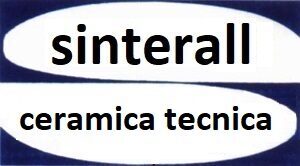TECHNICAL ADVICE TO USERS
The following notes are a guide for the best and most accurate production of ceramic details. Important savings can be made when the design of the parts has been decided after a consultation with the manufacturer. (This is possible granting both the widest dimensional tolerances and the possible maximum geometric simplicity, compatibly with the final application).
Having a consultation, at design stage, with the ceramic manufacturer is fundamental to maximise benefits in terms of costs, technical reliability and delivery.
TOLERANCE
SINTERALL ceramics are produced with “sintering” dimensional tolerances + – 2%, according to UNEL table 03711-73. For maximum cost- effectiveness, the ceramic parts must be designed with the widest possible dimensional tolerances and all the other components are drawn around them.
When strict tolerances are inevitable, grinding operations with diamond wheels are performed on the sintered product, this results in a considerable increase in costs. Sometimes such operations can be avoided if the application is previously discussed with ceramic manufacturers.
GEOMETRY
Avoid incisions, abrupt changes in diameter and cross-section to contain arrows, deformations and cracks, meanwhile increasing the mechanical characteristics. The thickness of the walls must be as large as possible to minimize ovalization and curvature. Particulars with thin walls often require additional processing and particular care in handling.
CORNERS
Small rays, chamfers and couplings are always preferable with sharp edges, limiting potential chipping and flaking in production process and during the use stage.
FINISHES
The available finishes are: raw (as it comes from the fire), tumbled, polished, enameled low or high temperature, rectified, lapped, “over fired” (to round up and increase the final dimension of the crystal).
